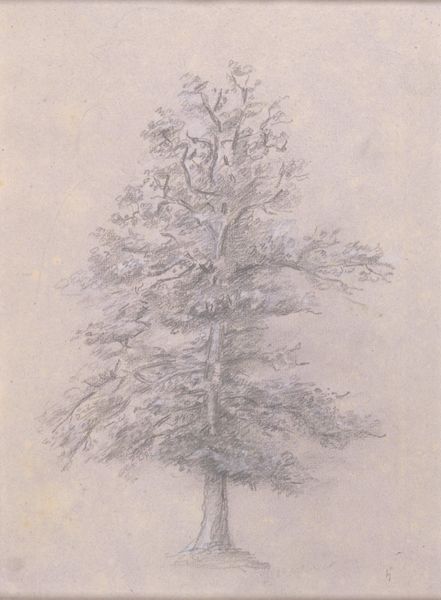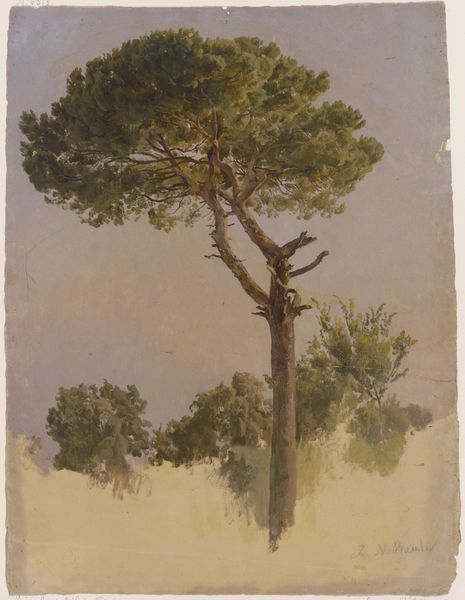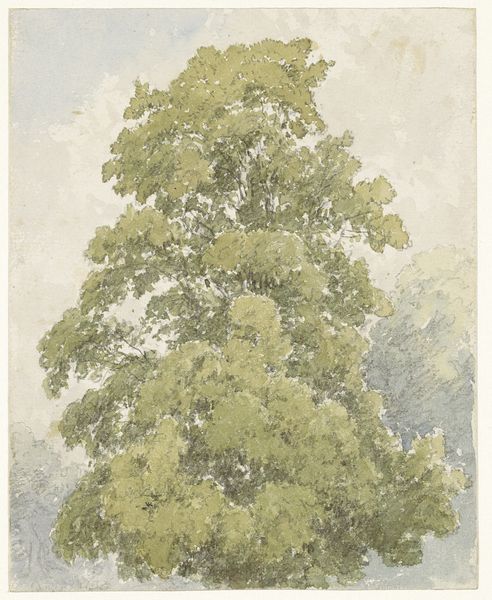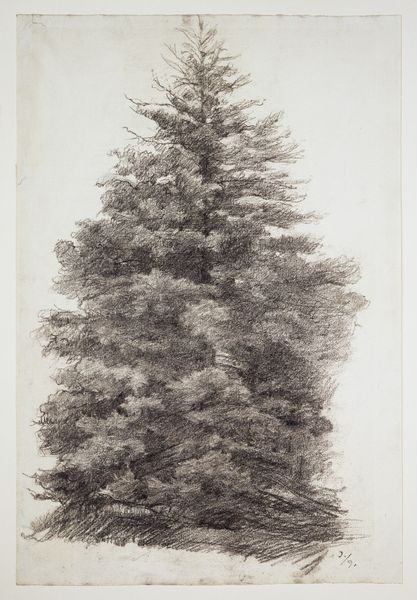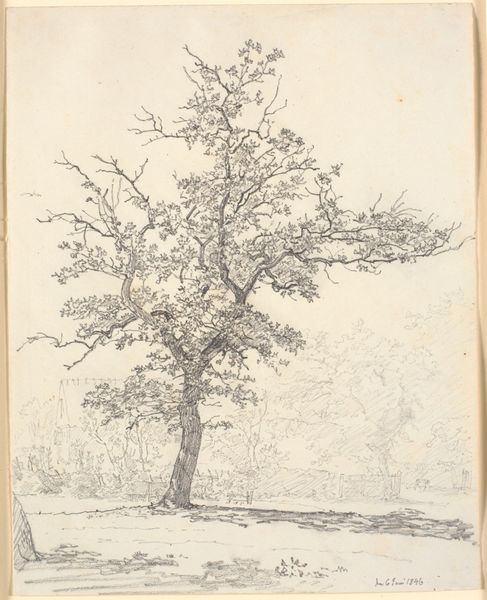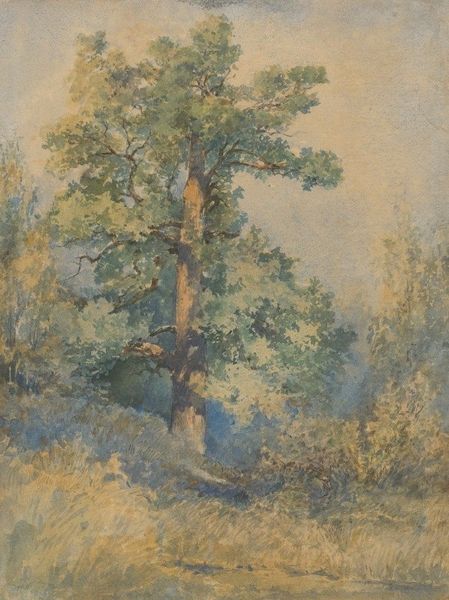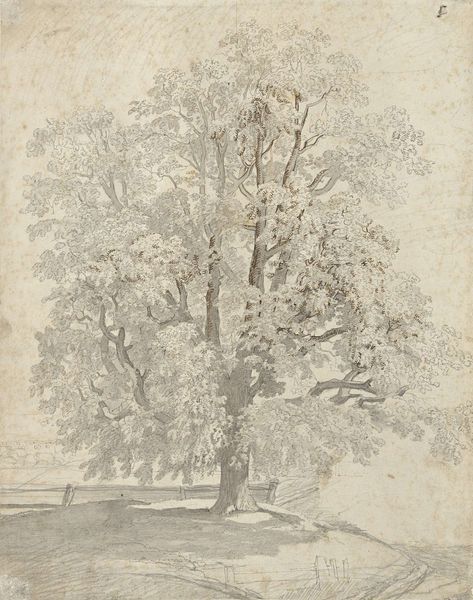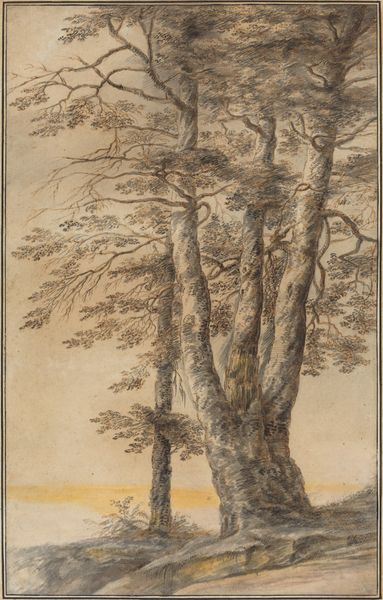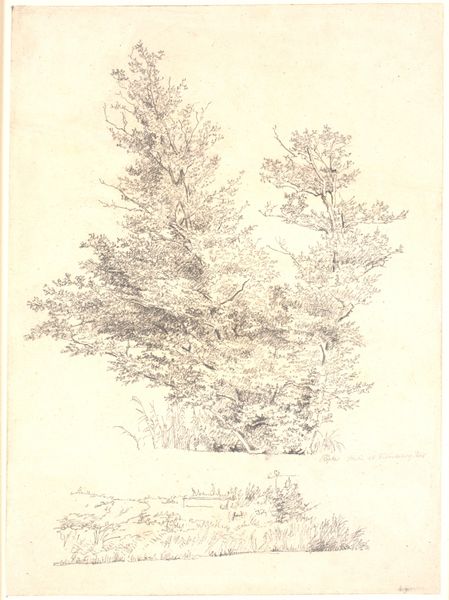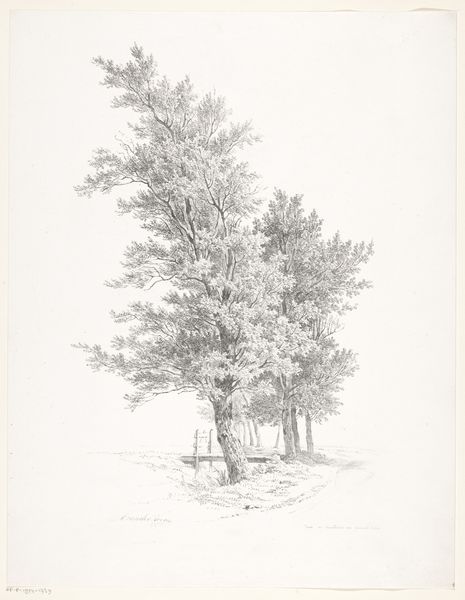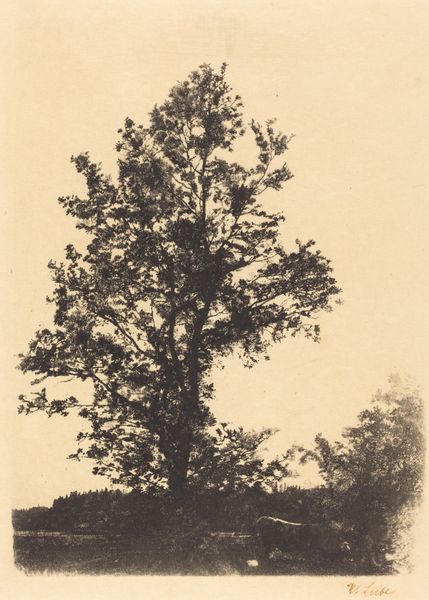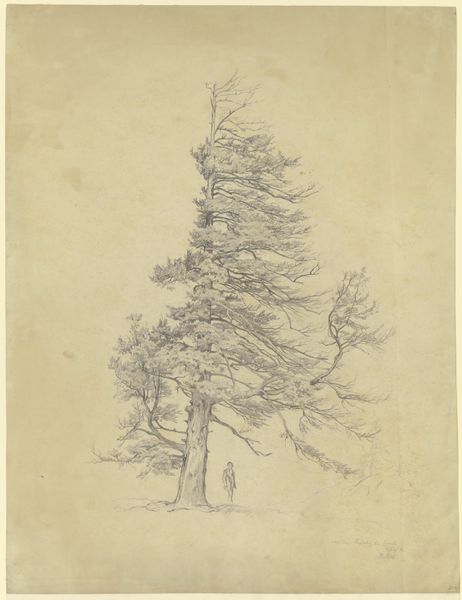
Copyright: Public domain
Editor: So, here we have "Le grand arbre," or "The Big Tree," painted in 1900 by Léo Gausson. It looks like it’s done primarily with watercolors. I'm struck by how the artist captured the light – it almost feels like the tree is breathing. What do you see in this piece? Curator: For me, it’s crucial to consider the materials Gausson employed and the very act of plein-air painting itself. In 1900, this immediate engagement with nature and the translation of it onto paper, the accessibility of watercolor, that challenges established hierarchies within art. Think about the labour involved: transporting materials, the swift application to capture fleeting light and atmosphere... It pushes against the monumental, academic paintings favored at the time, doesn’t it? Editor: It definitely feels more immediate and personal than some of the grand historical paintings I've seen. The focus is really on the single tree and its environment. Curator: Exactly. And think about what "plein-air" meant socially at the time – access to the countryside, leisure time... These paintings weren’t just aesthetic exercises; they reflected and shaped bourgeois experiences of nature, impacting things like leisure and tourism. Is Gausson celebrating that or maybe critiquing the change of it all? Editor: That's a great point! I hadn't considered how painting outdoors could reflect broader social changes, access, and consumerism during that time. Thank you. Curator: My pleasure! It reminds us that even the simplest landscape implicates larger systems of production, consumption, and power.
Comments
No comments
Be the first to comment and join the conversation on the ultimate creative platform.
